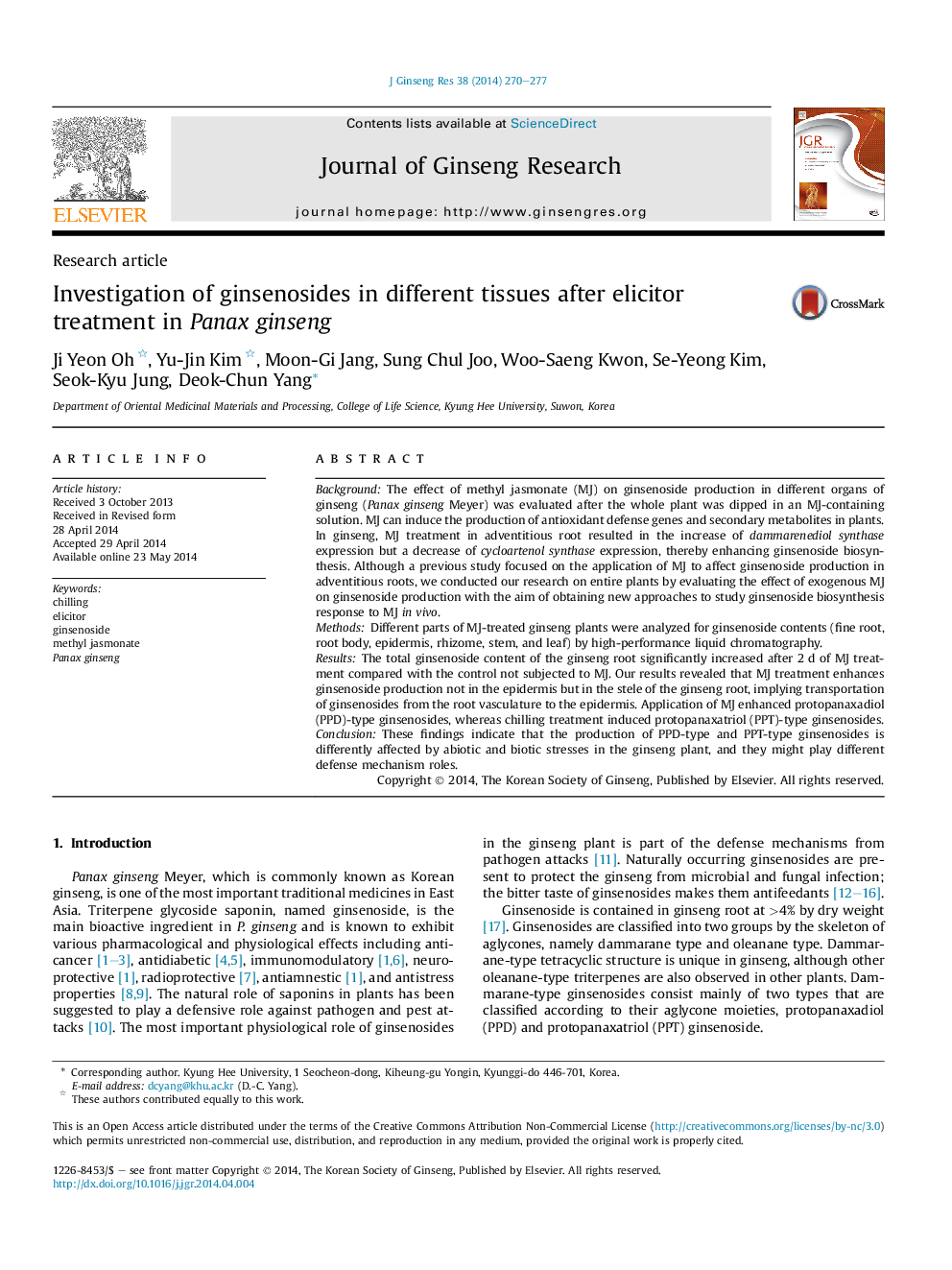| کد مقاله | کد نشریه | سال انتشار | مقاله انگلیسی | نسخه تمام متن |
|---|---|---|---|---|
| 3099357 | 1191100 | 2014 | 8 صفحه PDF | دانلود رایگان |
BackgroundThe effect of methyl jasmonate (MJ) on ginsenoside production in different organs of ginseng (Panax ginseng Meyer) was evaluated after the whole plant was dipped in an MJ-containing solution. MJ can induce the production of antioxidant defense genes and secondary metabolites in plants. In ginseng, MJ treatment in adventitious root resulted in the increase of dammarenediol synthase expression but a decrease of cycloartenol synthase expression, thereby enhancing ginsenoside biosynthesis. Although a previous study focused on the application of MJ to affect ginsenoside production in adventitious roots, we conducted our research on entire plants by evaluating the effect of exogenous MJ on ginsenoside production with the aim of obtaining new approaches to study ginsenoside biosynthesis response to MJ in vivo.MethodsDifferent parts of MJ-treated ginseng plants were analyzed for ginsenoside contents (fine root, root body, epidermis, rhizome, stem, and leaf) by high-performance liquid chromatography.ResultsThe total ginsenoside content of the ginseng root significantly increased after 2 d of MJ treatment compared with the control not subjected to MJ. Our results revealed that MJ treatment enhances ginsenoside production not in the epidermis but in the stele of the ginseng root, implying transportation of ginsenosides from the root vasculature to the epidermis. Application of MJ enhanced protopanaxadiol (PPD)-type ginsenosides, whereas chilling treatment induced protopanaxatriol (PPT)-type ginsenosides.ConclusionThese findings indicate that the production of PPD-type and PPT-type ginsenosides is differently affected by abiotic and biotic stresses in the ginseng plant, and they might play different defense mechanism roles.
Journal: Journal of Ginseng Research - Volume 38, Issue 4, 15 October 2014, Pages 270–277
